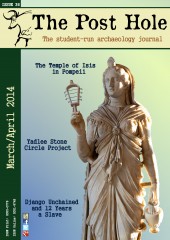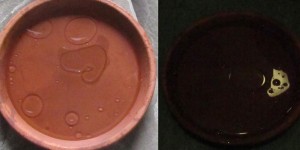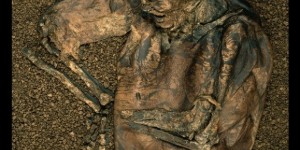There are a variety of non-intrusive archaeological survey techniques available to archaeologists which can assist excavations before they have begun, during the excavation – bringing clarity to uncovered features, and after – to tie everything together and create a detailed excavation report. Non-intrusive techniques include field walking, sampling, aerial photography, geophysical and geochemical surveys (resistivity and magnetometer surveys) GPR, metal detecting, GIS, and LiDAR (radar acting as its underwater equivalent). The value of each method depends on different variables including the environment, climate, light, time, aim and type of excavation and budget.
Non-intrusive techniques have developed over time, and while some remain fairly simple, others increase in their complexity. Field walking is normally identified as the most simplistic of non-intrusive methods to carry out. In comparison to conducting optical aerial photography, it is very straight-forward.
Aerial reconnaissance requires thorough planning and must be timed precisely in order to coordinate with favourable conditions where features can be identified with ease (Balme and Paterson 2006). In addition, the equipment and materials must be used by an expert in the field of photography. Although cameras and film-types used by the masses are very adaptable, optimum equipment and materials need to be selected, as a number of colour emulsions are sensitive to colour ranges. Colour and contrast can be enhanced by computer scanning, filtering, special developing and printing processes; infrared photography or other types of non-photographic digital images may generate clearer results (Green and Moore 2010, 65). When aerial reconnaissance is conducted competently, buried sites which may not be visible at ground-level can be brought to light. The sites are captured through discolorations in the overlying soil or crops, thus creating an invaluable guide for fieldwork and mapping landscape types from certain periods over large areas (Balme and Paterson 2006). It is therefore most helpful in the initial planning process of excavation.
Geophysical surveys are relatively easy to conduct as the equipment is simple to operate and, similarly to field-walking, the process requires little expertise. The simplicity of conducting a geophysical survey varies depending on which form of instrument you are using. For example, magnetic surveying does not require the insertion of probes in the ground; the instrument can be carried along a grid or linear system, whereas a resistivity survey requires multiple probes to be forced into the ground at regular intervals (Green and Moore 2010). As a result, magnetic surveys are substantially quicker and easier to use as there is a lower chance of configurations getting mixed-up. On further inspection, there are also variations amongst magnetometers with regards to the speed of their performance; proton gradiometers are easier than proton magnetometers; however, the fluxgate gradiometer has been termed the 'racehorse' of archaeological prospecting and can speedily record data continuously with no stops needed (Green and Moore 2010, 76).
Dissimilar to field walking and geophysical surveys, LiDAR and geographical information systems (GIS) require both technical experience and archaeological knowledge in order to identify features and trends.
The identification of a particular type of site or feature indicative of a particular time-period can be evident in air-photographs, with the use of morphology and knowledge of archaeological characteristics (Wilson 1982). For example, the Stonehenge Avenue in Wiltshire was the first feature to be identified by crop-marks in Britain, a discovery which later prompted excavation (Wilson 1982, 80). Aerial photography can also highlight several structural periods; an example of this can been seen at Burncastle Hillfort in Berwickshire (Wilson 1982, 98), and particular structures, for example the Roman town of Silchester in Hampshire was archaeologically identifiable due to its systematic street patterns and cluster of central public buildings (Wilson 1982, 106-7). This information can be very influential and inform an archaeological team where to concentrate their trenches, depending on their hypothesis or research question.
With archaeological work becoming increasingly expensive, cheap and efficient methods have become more favourable. Not only is field-walking simple, it is also very cost effective, as it requires only a small amount of inexpensive equipment compared to geophysical surveys which require, for instance, a magnetometer, which is very expensive to hire, let alone purchase. Methods which require electronic equipment are significantly more expensive than those which do not, and labour expenses must also be taken into account (Gaffney and Gater 2003). A simple method to carry out reduces the need for specialists, which can acquire high costs. It is also beneficial to commercial and rescue excavations which lack financial support, especially in today's economic climate in which Heritage Management has suffered cuts.
The simplicity of a method does not necessarily assure speed. While field walking may be a simple procedure which provides experience for amateurs, it can be very time-consuming and cumbersome on a large-scale (Grant et al. 2008). Due to lack of time, only a small percentage of sites are covered during field surveys, which does not include the surrounding landscape. Field-walking is normally only thought of as a tool for locating sites, which is accurate to an extent (Drewett 2011). For example, a group of amateurs called the 'Car Dyke Research Group' investigated over 5,000 fields between the years of 1968 and 1975 and thereby added 27 Iron Age, nearly 150 Roman and 15 early Saxon sites to the Sites and Monuments record, thus creating potential for new avenues of excavation which were not present previously (Brown 1987, 23). However, field-walking can also expand the excavation, and allow the site to be understood within its natural context by investigating relationships and the ways in which the surrounding landscapes were exploited (Drewett 2011). For example, a thin scatter of Roman pottery could suggest the use of animal manure and determine the extent of arable land.
Sites such as the Roman Villa Plumton in Sussex were identified because of the flint and chalk concentrations in the plough soil; flue, tesserae and painted wall plaster suggested a higher standard of living (Brown 1987). Inter-site analysis is also achievable with the use of field-walking results; clusters of material cultural can determine different house-hold room functions and its activity areas within an archaeological settlement (Drewett 2011). Some activities leave obvious archaeological traces – for example, surface concentrations of flint can be evidenced as an area of manufacturing: flint knapping. As result of this, archaeologists have a loose-idea of the type and function of the site prior to excavation.
LiDAR is arguably the fastest prospection tool and offers little comparison to manual topographical surveys, especially detailed surveys which require a combination of equipment and can be very extensive (Chapman 2006, 58). The Savernake Forest National Mapping programme demonstrates how using LiDAR as a primary method can create a highly detailed and accurate model of the landscape, and recognise and record sites which would have been hard to detect by other means due to canopies of woodland (English Heritage n.d.a.). Speed is essential during rescue excavations and watching briefs, due to the small time-frame in which archaeologists have to record archaeological evidence in a well-represented and accurate manner. English Heritage's record of The Mendip Hills AONB NMP is just one project that demonstrates the benefits of using multiple methods together; LiDAR can penetrate the plantation where aerial photography cannot (English Heritage n.d.b.).
The productivity of non-intrusive methods is not fixed. Some equipment can thrive in urban environments while others can be disturbed by the effects of wire fences, electrical storms, and transport networks (Green and Moore 2010, 76). For instance, field-walking is only productive in specific conditions – in ploughed fields. Sites that exist in an industrial environment or in a landscape which has not been subjected to arable farming are unsuitable. Field-walking is ideal for the collection of surface artefacts and recognising sites. Sites can be recognised through ground variation: form, colouration and characteristics of the ground. However, it is not as successful as aerial photography for uncovering new sites (Green and Moore 2010).
A prehistoric site in Rugby, Warwickshire shows that there is a measurement of effectiveness with every non-intrusive technique, as in this case, the error is most likely due to movement of field boundaries. The geophysical results differed greatly from the aerial photographic record of the site revealing a miscalculation of the location of site features and considerable difference in the shape of some of the enclosures. Therefore, geophysical data is not necessarily superior to photographic evidence from the air, but can check the accuracy of aerial photographic rectification on crop mark sites which are under investigation. This produces a more refined picture of the site which can help archaeologists produce a more meaningful interpretation before and during excavation (Gaffney and Gater 2003, 124). Another way geophysics can help excavation is in estimating the depth of deposits which lie on top of bedrock. This can be crucial at sites such as Cooper's Hole, a cave site in Cheddar, due to the low cave height and the clay deposits. Both conditions prevented the use of coring and GPR as possible solutions. However, using an EDM system provided the information as to how much material would have to be removed before layers of archaeological interest were uncovered (Gaffney and Gater 2003, 121).
The productivity of geophysical techniques is dependent on the weather and climate. Resistivity surveying falls short on sites where the moisture content is low, therefore it is favourable to seasons when sites are well drained but still moist (Greene and Moore 2010, 77). Harsh weather conditions such as frost and rainfall can reduce the productivity of measuring resistance and create inaccurate results. As a result, fixed features such as walls, ditches and roads are the easiest features to detect through resistivity. Similarly, magnetometers are well suited to particular features; the alignment of magnetic particles of heating at 7000°C or above, solid features and refilled ditches create suitable anomalies that are easily detectable (Greene and Moore 2010).
The Wroxeter Hinterland Project shows how magnetometers can compliment archaeological excavation after it has taken place. Recent excavations of the site have only uncovered a small percentage, 'certainly less than 1 percent of the total', consequently leaving large parts of the city unknown (Renfrew and Bahn 2012). The results of numerous types of geophysical survey, some of which included a gradiometer survey, a resistance survey, and a ground penetrating radar, created an extensive plan which revealed a hierarchal system with elite buildings prominently in the centre and artisan quarters to the southwest. In addition, the geophysical results provided archaeological information regarding the earlier phases of the site, which allowed the regression of the site to be evaluated (Renfrew and Bahn 2012).
Some methodologies can be understood by non-specialists. However a wealth of information can become confusing, especially when different types of data are combined. In the past, archaeologists have found the range of data from non-intrusive methods of archaeological practice "bewildering" to cross-compare (Grant et al. 2008). However, modern adaptations of Geographical Information Systems (GIS) now allow archaeologists to create a more precise collection of data in a shorter time-frame than before (Wheatley and Gillings 2002). A Geographic Information System (GIS) allows academic members of society to reconstruct a virtual picture of the past by combining multiple results. These include geographical surveys, desktop research, photographic records and geophysical and geochemical results which can highlight patterns, relationships and trends which were not evident on a single piece of data, for instance an oblique photograph which only reveals the initial site itself (Chapman 2006). The Giza Plateau Mapping Project shows how using digitalised software can bring together multiple types of data, including excavation, to create a platform where it can be understood as a collective (Renfrew and Bahn 2012). When comparing the difficulty of interpretation, aerial photography is slightly less demanding then geophysical surveys and LiDAR. Awareness of the limitations of aerial photography, especially with regards to crop-marks, need to be taken into consideration.
In conclusion, there is no single non-intrusive method which out performs all the other methods. Each method’s contribution to excavation depends on the amount of contemporary records available concerning the site, the condition and location of the site, the type of excavation being carried out, and the extent of achievement desired. There are stages of archaeological investigation where some methods come into their own; desktop surveys, aerial reconnaissance and LiDAR (in areas of forestry) are useful for the identification of sites and the ideal method to use before the start of an excavation. During the planning process, they can map the surrounding environmental landscape, adding context to the site, identify the type of site, create a relevant date in time and pinpoint functions and suitable areas of activity. Depending on the budget or the nature of the excavation, be they commercial, research or rescue, different techniques are more complimentary. Quicker technicality and less laborious procedures such as magnetometers, complement rescue excavations more than cumbersome techniques such as resistivity, as the most concise archaeological record needs to be made in a short-period-of-time. Ideally a combination of all the non-intrusive methods, some of which are used prior to and after the excavation has begun, is the most favourable approach to excavation.
Bibliography
- Balme, J. and Paterson, A. (2006) Archaeology in practice: a student guide to archaeological analysis. Oxford: Blackwell Publishing.
- Brown, A. (1987) Fieldwork for archaeologists and local historians. London: Batsford Ltd.
- Chapman, H. (2006) Landscape archaeology and GIS. Gloucestershire: The History Press.
- Drewett, P.L. (2011) Field archaeology: an introduction. 2nd edition. London: Routledge.
- English Heritage. (n.d.a) Savernake Forest LiDAR. [Online] English Heritage. Available at: http://www.english-heritage.org.uk/professional/research/landscapes-and-... [Accessed 17 November 2013].
- English Heritage. (n.d.b) Mendip Hilla AONB LiDAR. Available at: http://www.english-heritage.org.uk/professional/research/landscapes-and-... [Accessed 20 November 2013].
- Gaffney, C. and Gater, J. (2003) Revealing the buried past: geophysics for archaeologists. Gloucestershire: Tempus Publishing.
- Grant, J., Gorin, S. and Fleming, N. (2008) The archaeology coursebook: an introduction to themes, sites, methods and skills. 3rd ed. London: Routledge.
- Greene, K. and Moore, T. (2010) Archaeology: an introduction. 5th edition. London: Routledge.
- Renfrew, C. and Bahn, P. (2012) Archaeology theories, methods and practice. 6th edition. London: Thames & Hudson Ltd.
- Wheatley, D. and Gillings, M. (2002) Spatial technology and archaeology: the archaeological applications of GIS. Florida: CRC Press.
- Wilson, D. R. (1982) Air photo interpretation for archaeologists. London: Batsford Ltd.







